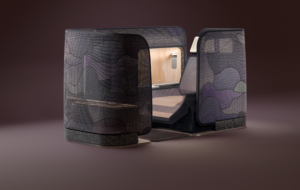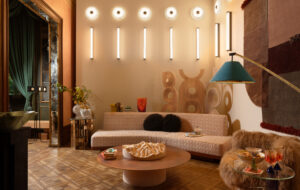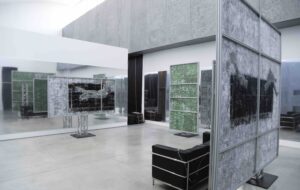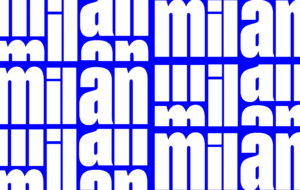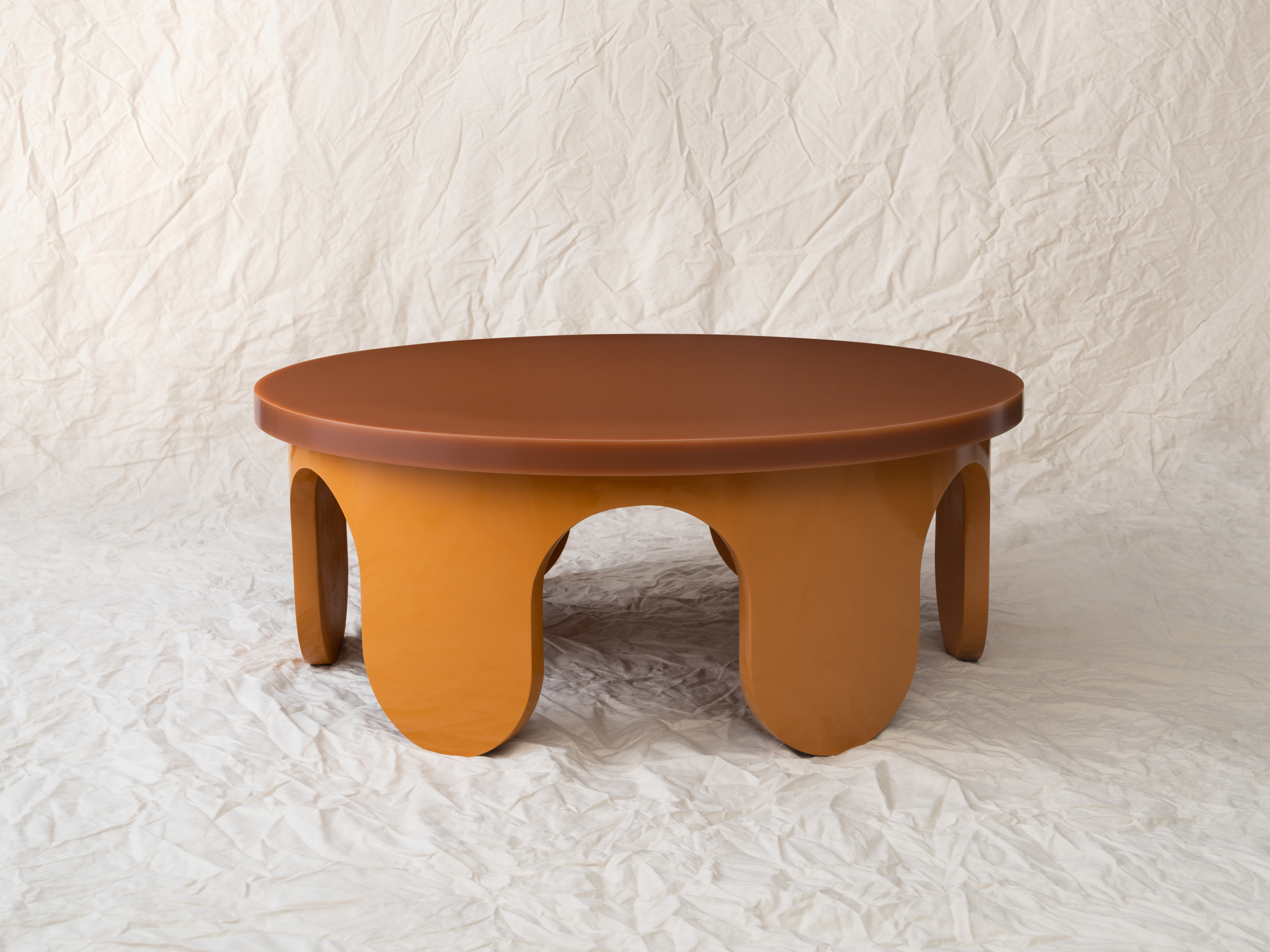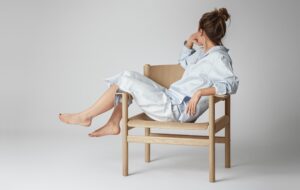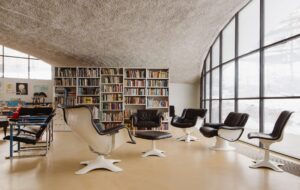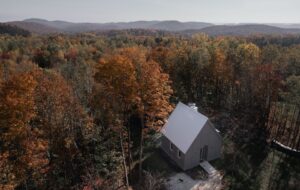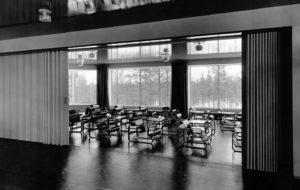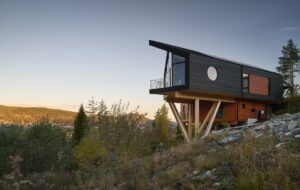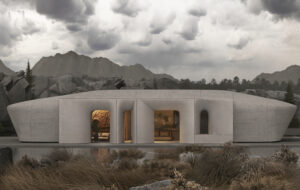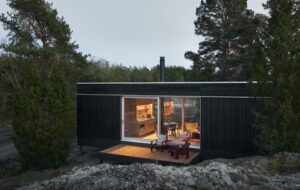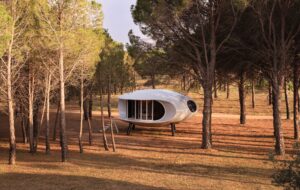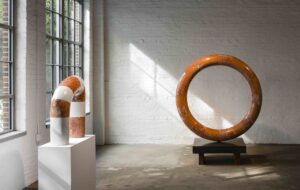
words Lucy Bullivant
Amid some controversy, the second Valencia Biennale tries to answer local concerns about plans for the city.
The protesters with their ear-splitting whistles at the door of the Convento del Carmen for the opening of Will Alsop and Bruce McLean’s exhibition at the second Valencia Biennale, weren’t out to slate this creative duo. The biennale organisers tried to confiscate their leaflets demanding a greater attention to the real needs of urban regeneration in the city, but in fact both are committed to community architecture and social space.
Alsop & McLean’s Department of Proper Behaviour installation isn’t a self-conscious store or art exhibition. A sequence of dark and light spaces for relaxation, smoking, drinking, watching films and reading, separated by billowing curtains, give the convent a new use. Amid the surprises – McLean at work all evening as a cocktail barman – these communal refuges exorcise our hunting motivation to shop in favour of the sociable, unprogrammed happening.
The biennale takes The Ideal City as its theme, logical in a competitive Mediterranean city that not so long ago built the impressive Calatrava-designed cultural complex, the City of Arts and Sciences. Art, architecture, photography, public art installations, drama and opera were part of its ambitious programme, costing €4.5 million (£3.1 million). Yet the anti-biennale contingent claims that the Generalitat Valenciana ignores the fates of the vacant lots in the neighbourhood barrios now used for the Solares public art programme. The encroachment of the city on the green agricultural belt around Valencia is another concern. Fuelled by this mounting tension about failed political agendas, the exhibitions that stood out shared a dialogue about the need to invest in social space.
Photographer Sebastiao Salgado responded to the ideal city theme with The Face, Mirror of Society, his touching portraits of 100 locals of all descriptions. An ideal city can only be one defined by human beings, not architecture, buildings and streets, he maintains. Unfortunately, the biennale organisers didn’t fulfil his vision of displaying them on advertising hoardings, but placed them more conventionally in the new Muvim cultural centre. Another exhibition, Microutopias, shows how re-appropriation and re-use has long been a preoccupation of art and architecture, with works from the 1960s by pioneers such as Constant, Matta-Clark and Haus Rucker (represented by their gem, the Yellow Heart inflatable living space, and revealing how completely Ortner & Ortner, two of this radical group, have moved to minimal aesthetics). Works by Joep van Lieshout and Lucy Orta, contemporary fans of nomad communities, perpetuate the mood of bullish optimism that solutions are to be found in the moment.
Valencian architect Vicente Guallart curated the Soci—polis exhibition, which shows new proposals for social housing commissioned from Toyo Ito, Foreign Office Architects, MVRDV, François Roche, Abalos & Herreros, and others including Duncan Lewis, the British architect currently designing social housing in Mulhouse with Nouvel & Ban. Placing local concerns over global ones, the exhibition shows ideas by these distinctive voices integrated in a masterplan of a new community on the outskirts of Valencia. Sociópolis’ polemic is that the huerta (land used for crop growing) is not only threatened by mega-sized urban blocks but also by rashes of terraced housing and fenced-off private gardens. Instead its proposals unite agriculture, industry and information, with housing and facilities for single parents, the elderly, and families with autistic children. Guallart’s requirement that the designs should hybridise with nature has released a lush landscape of schemes: Greg Lynn’s Onion Blossom with its studio quadrants, open atrium core and landscape petals, and Foreign Office Architects’ nine-storey dwelling block for 12 types of social grouping with top-floor work spaces, a kitchen garden and public meeting spaces, its inspiration drawn from the traditional vertical water-pumping mechanisms. Land is put to imaginative use with hybrid solutions that are also viable, including Guallart’s own design, a communal tower of shared spaces between dwelling units so that a 25sq m domestic space has 75sq m of useable environment.
As a bid to “tear down” the urbanised countryside garden fences that Guallart despairs of and make better use of land without resorting to political or aesthetic abstraction, Sociópolis has a massive validity for the future of all industrialised cities. He says that the Generalitat Valenciana will go ahead and build the development in the next three years, so we hold our breath and wait for this ideal city to be made real.
Valencia Biennale: The Ideal City, www.bienaldevalencia.com

